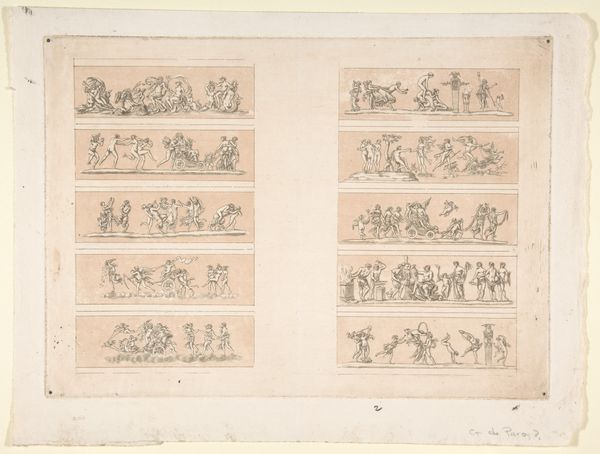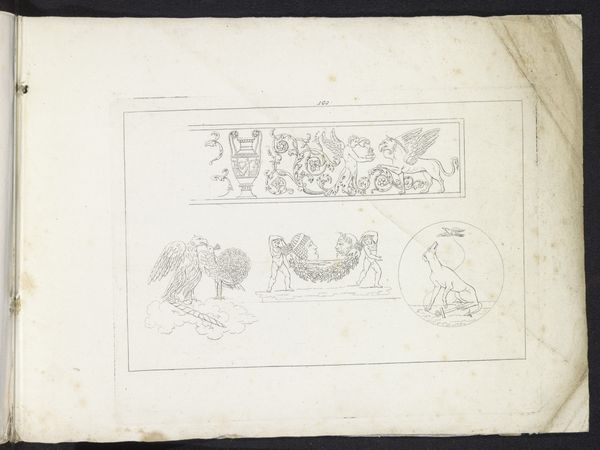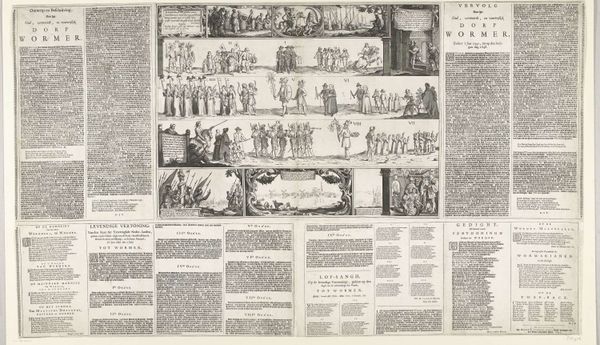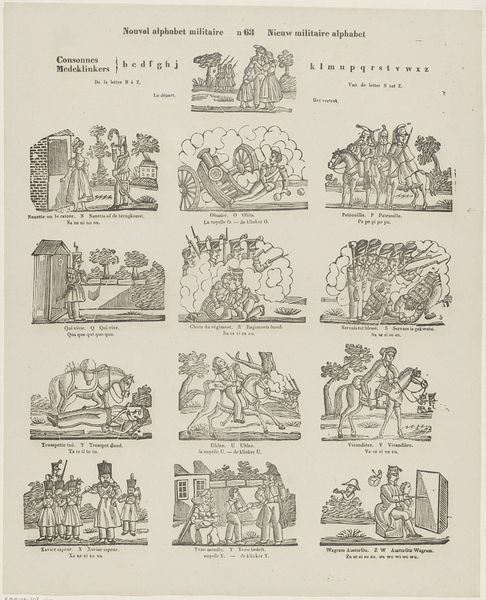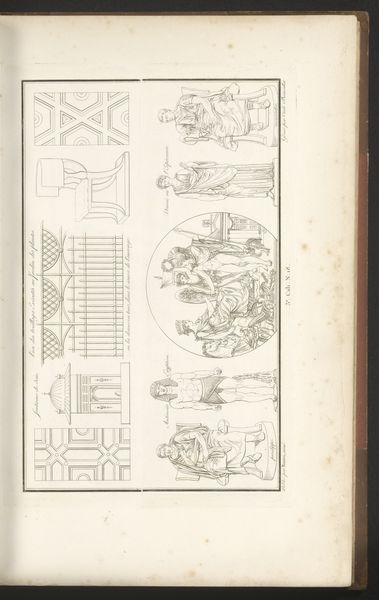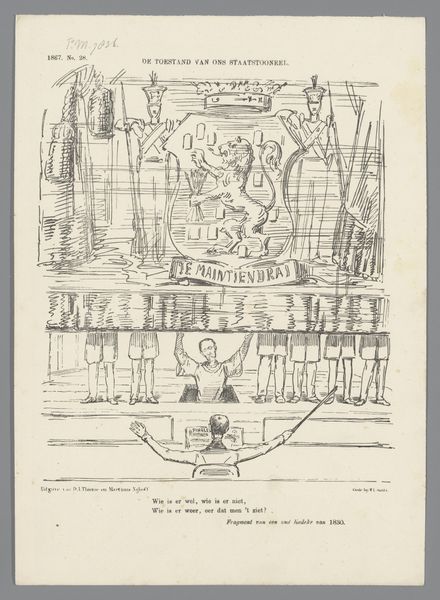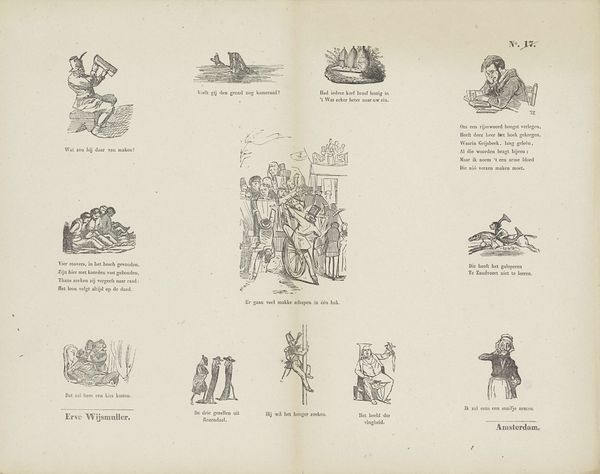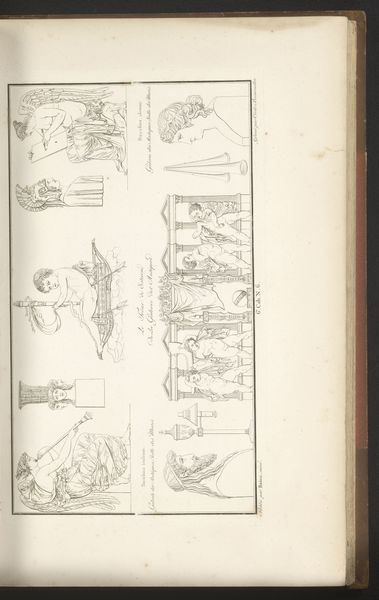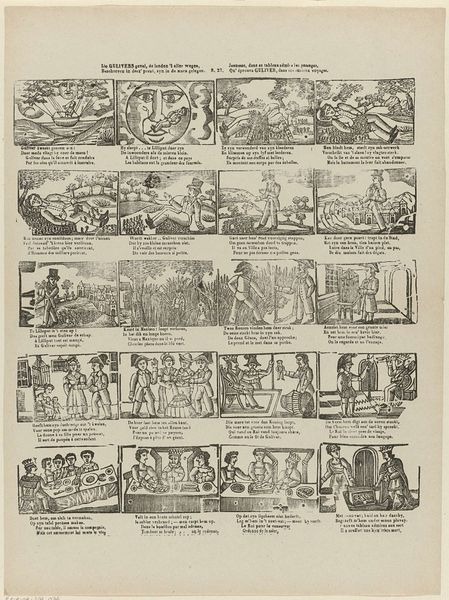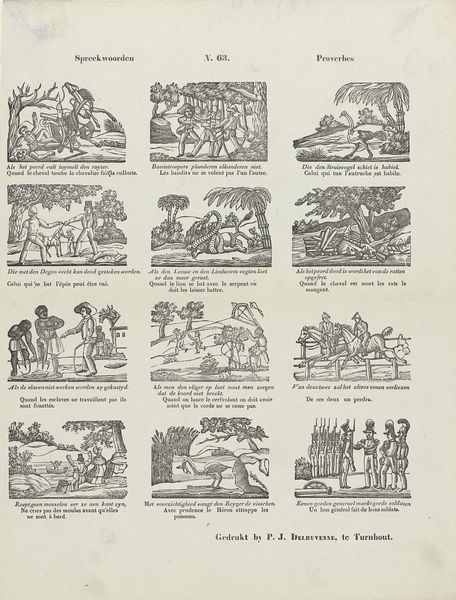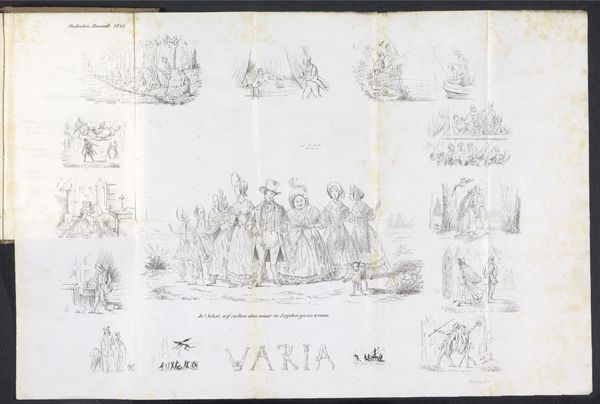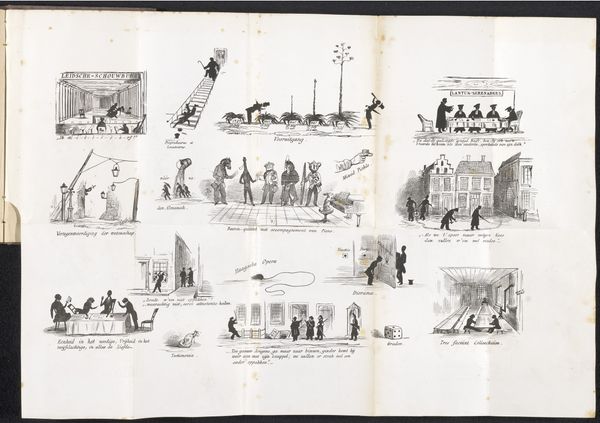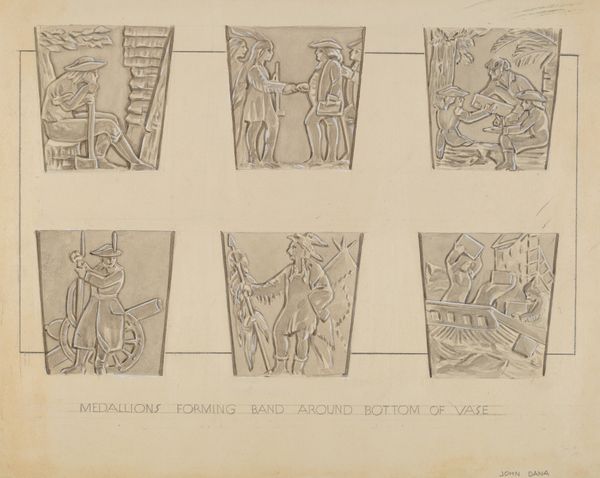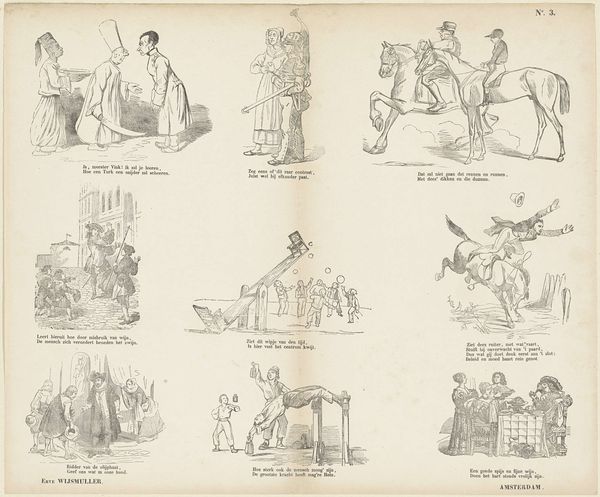
Figuren op de gildehoorn van het Grootveerschippers Gild te Harlingen en op de drinkhoorn van het Sint Antonis-Gild te Stavoren 1850
0:00
0:00
drawing, lithograph, print, paper, ink
#
drawing
#
lithograph
# print
#
landscape
#
paper
#
ink
#
cityscape
#
genre-painting
#
history-painting
Dimensions: height 120 mm, width 170 mm
Copyright: Rijks Museum: Open Domain
Willem Albarda made this print in 1884, depicting details of ceremonial horns belonging to guilds in two Dutch towns. It is likely that he used a metal plate, coating it with a waxy ground, then scratching away the lines to be printed. The plate would then have been submerged in acid, which bit away at the exposed metal, leaving an impression ready to be inked and printed. The materiality of the print is key to understanding its cultural significance. The fine lines etched by acid mirror the delicate craftsmanship of the original horns, objects associated with trade, civic identity, and communal celebration. The horns themselves were likely made with great skill, perhaps from precious materials like ivory or horn. This print gives us access to appreciate them, and the work embedded within them. It serves as a historical document, cataloging symbols of labor, politics, and consumption within the guilds of the day. It challenges our understanding of the distinctions between high art, craft, and the everyday objects that give meaning to social life.
Comments
No comments
Be the first to comment and join the conversation on the ultimate creative platform.
